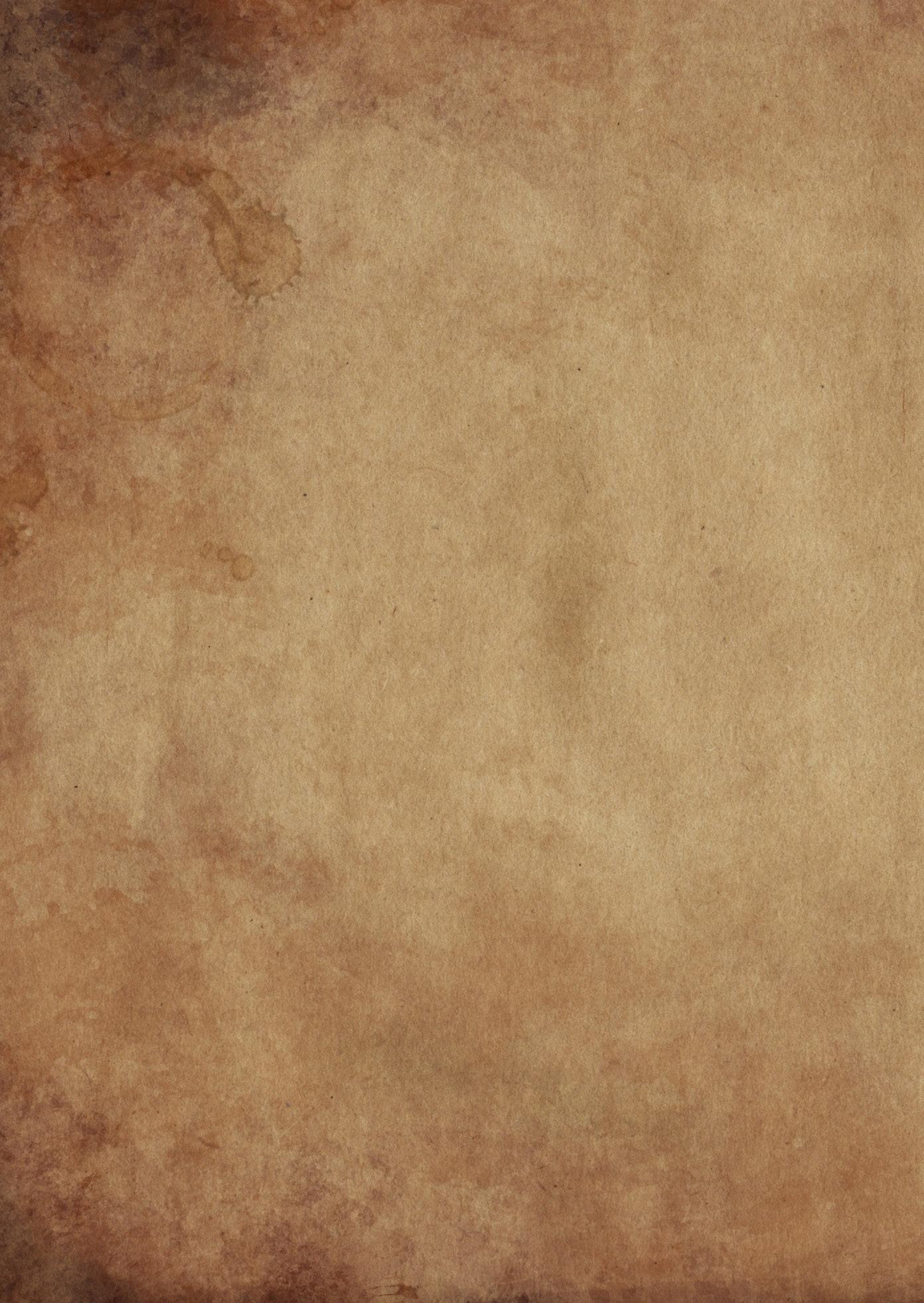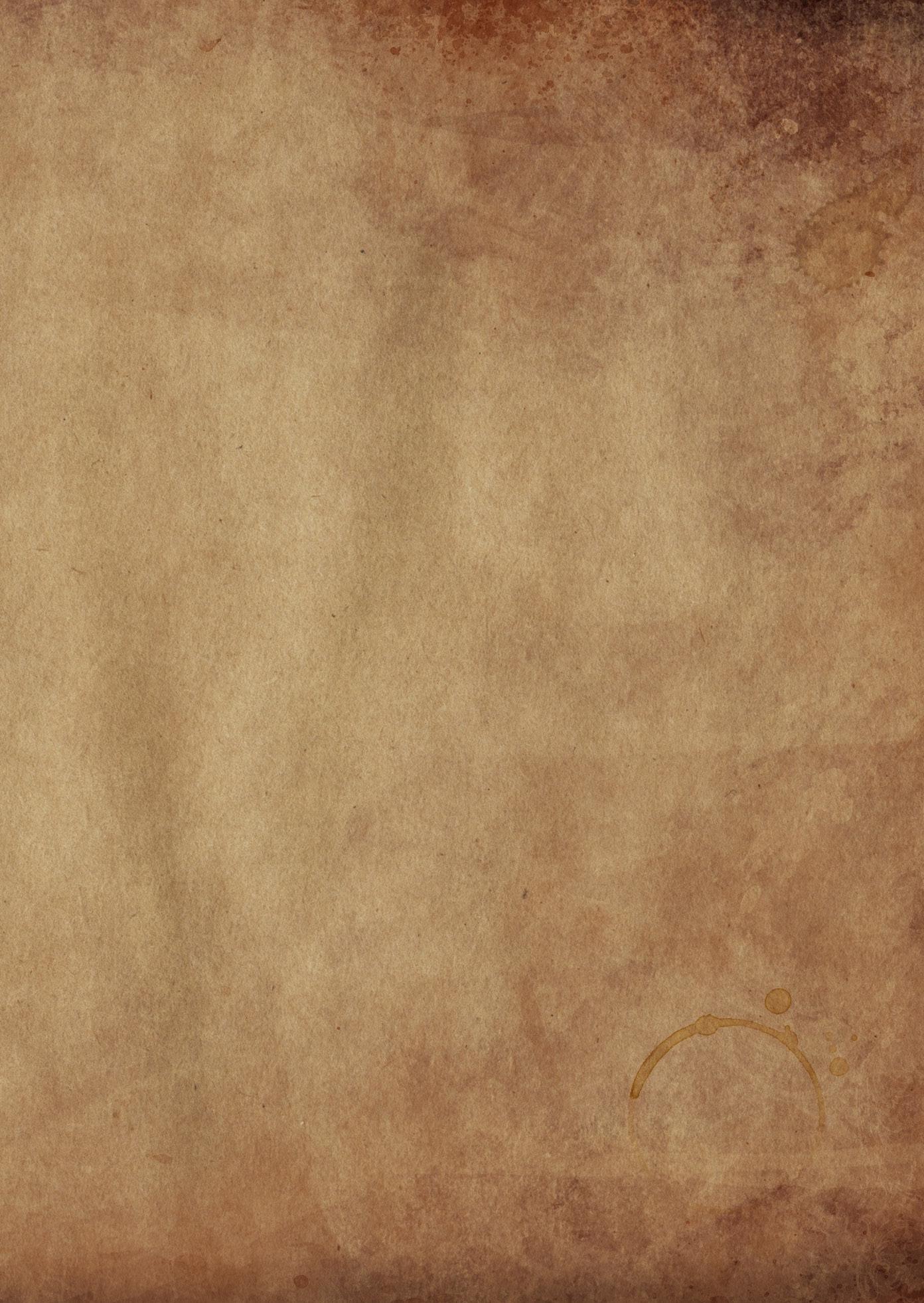
21 minute read
The Five: Tilburg’s Hidden Gems By Sandra Pham
1. The Gaming Factory
This is a game hall of approximately 1500 m2 which has a fantastic range of games. You can play their E-games like Fortnite, Airhockey and board games. It’s a great thing to do with your family, friends or date. At the bar it is possible to have a drink and a snack. At the same time, you will be surprised by the many activities which take place in the game hall.
Advertisement
2. De Nachtzuster
This is a place full of inspiration and sociability where you can meet new ideas, people, and creators. They have multiple activities to offer, like creative hook workshop with pizza, dinners with spoken word and musical network drinks with BBQ. During the week they offer special lunches so you can connect with other creators at the lunch table. De Nachtzuster is the new creative meeting place you need to visit.
3. Cinecitta
The arthouse cinema shows movies of all directions of the world, which often transcends Hollywood blockbusters. It has three cinema halls, a multifunctional room, a stylish conference room, a restaurant and a bar. The cinema also has a green touch: the heat of the movie projectors is connected to the heat network, which means less ventilation than usual is required. The furniture is mostly second-hand, the paper that is printed is sustainable and sustainable cleaning. Pay a visit to Cinecitta, a beautiful cinema full of allure.
4. De Nieuwe Vorst
This is an intimate and warm theatre, where you are sitting close to the skin of the artists. After the show are these performers having a drink with you in the attractively lit garden of the theatre. It is a place in Tilburg where different art forms come together, and where people work together to make the theatre accessible for everyone. They offer a folk kitchen once a week, interesting lectures, spoken word shows, dance performances and of course theatre performances. De Nieuwe Vorst is a small theater that welcomes everyone, and is therefore definitely worth a visit.
5. Het Zuidelijk Toneel
This is a place where you can discover new sides of yourself. It’s a theatre house where creators walk their own path around a six-monthly theme. It offers performances who interact with the public, making people think about themselves and their views. Het Zuidelijk Toneel has plenty to offer for the creative students among us with their youth platform: HZTEAM. As part of HZTEAM you visit presentations and repetitions and you report on the many activities on the area of art, culture and theatre.
JULIËTTE SCHAAFSMA is a professor at the Tilburg School of Humanities and Digital Sciences. Most people will know her from the first year course Communications in Organizations (CIO) which she gives every year. Five years ago she appeared in the Flowzine with an interview. Back then, she was about to start a large-scale, international research project, funded by the European Research Council. Now, five years later, we interview professor doctor Schaafsma again and ask her how research and teaching are going.
PROJECT
Can you tell a bit more about the project you’ve been working on for the past five years?
It is a research project that we are conducting in many countries. In recent years, more and more countries have started to apologize for human rights violations from either the near past or the distant past. And that’s something that raises debates quite often. Can a government leader apologize for something that he did not do himself and that has happened in the past?
Also, questions about collective responsibility rise: To what extent do we bear responsibility for past wrongs? The project has two big parts, one part is looking much more at what those assumptions that underlie political apologies are. So, is the gesture achievable and desirable?
We also did interviews with people in different countries. And these are very different countries. We’ve done interviews in Jordan, Japan and the United States, among others, where people were presented with situations, usually past human rights violations and then asked how to deal with them. We also conducted a large-scale survey in 30 countries.
For the other subproject, we started mapping out much more of what the whole apology landscape actually looks like: which countries have apologized and what characterizes those countries and apologies? That’s been a lot of studies and we actually have all the data now. Corona did cause a little bit of a delay, but we have all the data in now, so we’re really very busy analyzing and writing.
At some point, don’t you get a little tired of the research when you’re working on it for so long?
No, I haven’t had that. And I do understand why you’re asking this question. But I haven’t felt that. That is mainly because there are so many different aspects to the research and the topic as a whole. There are always different subjects, different methods, different organizations. It’s a whole logistical operation. We
can’t do everything ourselves, so then we also need assistants who have to be trained. Then you also have a whole network of all kinds of people in all kinds of countries and you have to coordinate all of this, which is sometimes quite complicated. So that’s why it’s never boring.
What are the biggest standouts of the research?
What strikes me is that the concept of excuses exists everywhere. It is something that’s “inherent” to people. I actually find that very interesting. It’s a fundamental gesture in our interactions, that when you’ve done something wrong there is a way of showing us that you know you acknowledge that. I find it interesting that that’s something that’s just understood everywhere. It is a fundamental human gesture.
I also find it interesting that in a lot of countries, people feel that countries can apologize on their own. People think that countries, in general, should do that, but make an exception for their own country, of course. This finding is represented more strongly in some countries than in others. Apologizing happens all over the world, but more so in liberal democracies. And you see that it’s actually a phenomenon of the last 35 years.
You also see that victims are playing an increasingly important role in the public domain. Previously if you were a victim of something, you kept your mouth shut and didn’t go out telling people about your struggles. Through the media we now have, victims have more opportunities to tell their stories. You can see that victims play an increasingly important role in the public domain and can therefore exert pressure.
What did you like the least about all of the research?
The bureaucracy. Sometimes it’s just frustrating that things take a very long time because you have to wait for red tape, for example. So, in terms of content, there is nothing I didn’t like!
What is the idea for the future of the research?
It should be ready next year. But we still have some work to do. We have so much data lying around, so before the end date, we won’t get it all processed. We need a few more months to really finish it. There’s material for years I will say. I don’t have to be bored in the upcoming time!
When the research is done, what then?
When the research is done, there will be plenty of new management functions waiting and then there will be time for teaching and new research.
Do you plan to do more teaching when this project is finished?
It depends a little bit on the project, also on the managerial tasks. It may be that I will teach a little more. But it won’t be substantially more. I think it is important to teach and to have contact with students, to move with the students. This is also why I continued to teach CIO during this project. If you stop teaching for five years, suddenly you have a whole new generation of students in front of you.
TEACHING AND CORONA
Has there been much change in the way you teach or how education is generally taught in the past five years?
Because of corona, of course, a lot has changed and that has had a lot of impact on teaching and how we teach. I really like teaching in the classroom, the contact and interaction with the students and the dynamics of the room. I am very happy that we can go back to offline teaching. I’m not in favor of online education. I understand that it has certain easy sides, but education should not be easy. Education should challenge and education is interaction. Looking at education in general, I notice that students are increasingly addicted to devices. I also find that the quality of certain skills is declining. For example, students’ language skills are not getting better, only worse.
And why is it that language skills are declining? Is it because people have more and more devices and conveniences?
I don’t really know, I never have that much insight into what people are taught in high school and how much guidance or how much feedback they get in the process. I also feel that the knowledge of sentence structure is decreasing. That also really has to do with vocabulary and reading. So, I think that reading is really one of the main causes; or rather, the lack of reading. Reading may not be seen as something enjoyable anymore or something that will benefit you throughout your life. Reading is one of the main ways of acquiring knowledge both consciously and unconsciously.
In this, a major fallacy is also often made by students. It is a mistake to think that knowledge is something you can look up. Real knowledge is something that can eventually result in wisdom. Knowledge is something you build up and for which you have to put many things in your head, but which nobody can take away from you once it is in your head. Knowledge is something you carry with you, in every situation. So, I think as a university we have a duty to teach students this. And that is something I have to explain to students over and over and something not everyone understands equally well.
The Future of the Efteling
We can finally go to the Efteling again! Next to the fact that this amazing theme park is open again, there are also a lot of exciting new things have been built in the last few months, or which are going to be built in the upcoming period. In this article we will tell you about the new eat and drink facilities ‘t Verwende Nest in Speelbos Nest (Play Forest Nest) and about the plans around Reizenrijk (Travelsquare).
‘t Verwende Nest: in the end of May the new Play Forest in Ruigrijk opened, named Speelbos Nest. For us, as communication scientists, it’s very interesting to know that this Play Forest is made for every young park visitor, with and without (visible) disabilities. Even though this playground is made with a focus on children, it is worth to have a look around this playground.

Next to the very detailed elements of the Efteling rollercoasters - which you can find in this play forest to prepare the younger visitors for the rollercoasters - you can get a nice snack at the new eat and drink facility. At this facility called ‘t Verwende Nest, you can get a Chimney Cake (or in Dutch Kurkentrekker) with a nice drink. This Chimney Cake is made of sweet bread in the form of a corkscrew (in Dutch this means kurkentrekker). Before baking, the bread is sprinkled with sugar and cinnamon. To sound more excited, you can choose a topping (chocolate, strawberry meringue, or kiwi-watermelon) to fill the Kurkentrekker! à

An extra fact for the real Eftelingfans: the name of the snack refers to the eat and drink facility which was opened with the Python in 1981. This facility Kurkentrekker (Corkscrew) referred to the part of the Python where you hang upside down in the rollercoaster. The Kurkentrekker was taken down to make place for the watercoaster De Vliegende Hollander (Flying Dutchman).
Unfortunately, in the first week of September, we had to say goodbye to the Monsieur Cannibale and the Adventure Maze (Avonturen Doolhof), but nevertheless we will get two beautiful attractions back, in theme of Sindbad the Sailor, from the stories of 1001 Nights. The Adventure Maze opens its space for a new water playground, named Archipel. The Monsieur Cannibale spinning cauldrons will be adapted by merchant barges and the name of this attraction will be Sirocco. Next to these new attractions, the whole Travelsquare (Reizenrijk), except for Carnival Festival, will be adapted to the world of Sindbad to create an overall 1001 Nights vibe. 15

An extra fact for the real Efteling fans: did you know that our wealthy merchant Sindbad has become part of the Efteling since 1998? The rollercoaster Vogel Rok is an adventure from one of his seven sea journeys. Besides Vogel Rok, the new attractions Archipel and Sirocco will show us two of his other sea journeys. In these drawings, we can see some impressions about the theme and how everything is going to be built.
It seems that the ‘outside’ fun that we were deprived from in the pandemic is now taking new and creative forms. The theme park has evolved, and it is prepared for a brand-new start, welcoming its visitors with open doors. Are you excited to go (back) to Efteling to experience even more of its magic world?





Optical Illusions with Emiel Krahmer
Most students Communication- and Information Sciences will probably be familiar with Emiel Krahmer. As a professor and researcher, Emiel is very interested in cognitive science. We were lucky to have an interview with him about optical illusions: ambiguous pictures with more than one interpretation.
Could you explain how you became interested in cognitive sciences?
“I am very interested in how people communicate with each other, using language but also non-verbal cues such as gestures. But if you start looking at how language works, it turns out that a lot of different cognitive processes play a role. For example, it’s difficult to talk to each other when you can’t remember what someone else just said, so memory is very important. It’s also very important that you can see each other when you talk to each other face-to-face. In that way you can pick up non-verbal signals, so visual perception is important. In short, when trying to understand communication, studying other processes such as memory, visual perception, and auditory perception is inescapable. That’s where my interest actually started.”
What is your most favourite optical illusion?
“We were just talking about cognitive processes being important. Cognitive illusions also say a lot about how visual perception works. Optical illusions work because of hitches in our visual perception. As discussed, and as will be discussed in the lecture: your previous experiences, things you’ve seen before, determine to a larger degree how the illusion works. Schroeder stairs

What’s nice about the Schroeder Stairs is that it is a staircase that you can see both from below and from above. The funny thing is you have two interpretations of this picture. You’ll probably see the stairs from the top because that’s the interpretation you see the fastest and you really have to think to see the stairs from the bottom.
The Necker Cube, recognizable from the lecture, is based on the same idea: it’s a cube that you can see from below and from above, but with the stairs you’ll probably have a stronger feeling of ‘I only see the staircase from the top’, because by far the most staircases you have seen in your life are from the top instead of the bottom.”
Necker cube

What do you like the most about optical illusions?
“What I found completely amusing and surprising about optical illusions is that they are actually still being discovered. So, people do research on visual perception, and they discover new illusions. There are even prizes for that! So, on the one hand you learn a lot about how the visual system works. The illusions are not just funny pictures, but it proves that the expectations you have, previous experiences, have an impact on what you perceive. And on the other hand, it’s not a subject which is finished. I used to think these are the illusions and that’s it, but it’s a place for research and new illusions or new ways of showing them in an even more drastic way.”
How does one fall for such an illusion like the Schroeder stairs?
“Visual perception is not something you do with your eyes, but with your brain. Your brain expects to see certain things and those expectations are very much guiding what you perceive.”
Do you know an illusion that is used in daily life that people often fall for?
“Optical illusions can make you appear thinner of fatter. They are also used in compression techniques. Things that are very attention-seeking in a picture, are typically not the parts that are compressed. So, the information about visual perception is used to compress pictures.”
Can a person’s characteristics be reflected in what they see in an optical illusion?
“Yes, I think so, because your previous visual experiences determine what you see, and not everyone has the same visual history, so not everyone falls for the same optical illusions either. But it differs between illusions: you have illusions targeting the functioning of the eye for example. Those are physiological rather than cognitive. You expect less of a person’s characteristics being reflected in what they see in a optical illusion.”
Have you ever been completely fallen into an illusion?
“My visual perception is the same as everyone else’s, so all the optical illusions that people are susceptible to, I’m susceptible to as well. Even if you bring all the knowledge about visual perception with you, you still fall for those optical illusions, because your own visual perception is fooling you.”
Have you ever used a optical illusion to fool someone else?
“No, and I’ve never thought about that either, except that I sometimes wear blouses with stripes, but not intentionally. Maybe a good tip for the future.”
Krahmer adds as a moral of the story: “In the lecture on visual perceptions and illusions from the Cognition and Communication course, it’s not just about using the optical illusions, which is a lot of fun too, but it’s especially important that optical illusions are used to learn something about cognition in general.” 18
WHEN DOES SOMETHING GO VIRAL?
We, as consumers of social media, are bombarded with content on a daily basis. In a world where every fleeting moment is filled with screens, it has become easier to create content. Have you got a smartphone? Congratulations, you can now become a journalist, photo- or videographer, just by pressing some buttons.
The bar for making content is at an alltime low which means more content is being made every single second. Despite these heaps and heaps of TikToks uploaded to the internet every day, there are still some particular ones that we all have seen. A viral video can change the life of its creator overnight, and this is what many content creators are looking for; that one video that will conquer the internet in a short amount of time. But what or who decides what goes viral?

For a video or post to go viral, it has to be shared a lot. But what are the underlying motivations of users to share certain content? According to Kevin Allocca, YouTube head of culture and trends at Google viral videos have three things in common:
Firstly, viral videos or posts are often introduced to the public by tastemakers. These are influential people who introduce average people to interesting things, think about influencers or celebrities with followed by a large online community. Then, as a result of a tastemaker helping a video into the limelight, a community start forming around this now called ‘phenomenon’. It is this community that makes sure the video is spread and shared across the internet and starts adding, participating and interacting with the content. In this way, viral trends come to be.
The third and last aspect that all viral content seems to have in common according to Allocca, is the element of surprise. Viral videos need to bring a kind of novelty and raise curiosity among their viewers.
This need for novelty is also found in psychology, where research says that content that feels new or fills information gaps triggers the release of dopamine. Dopamine is a type of neurotransmitter that encourages us to experience pleasure or excitement. Because of this, dopamine can influence us to behave a certain way in order to achieve that exciting state as much as possible.
We can see this behaviour whilst we are browsing through content. Our brain directs our attention to something new, recognising old knowledge and neglecting it because it does not offer us the same amount of dopamine as new content does. In this way, the brain is hardwired to search for novelty, since exploring a new environment can come with rewards. This is why it is much easier to scroll through your phone, seeing something new every three seconds than read a book.
Next to our need for dopamine, we are also just curious and want to broaden 19
our knowledge. According to the information gap theory, humans feel the need to fill in the gap between what we already know and what we want to know about topics we care about. In this way, we want to put effort into learning new information. This theory is often used in “how-to” or “everything you need to know about” videos. It is these kinds of videos or posts that offer us the opportunity to broaden our knowledge about subjects we care about.
So, now that we have found new and knowledge-broadening content, why should we share it with others? There are a lot of motivations to share certain content, varying from starting a conversation to boosting your reputation, but there is one characteristic that all shared videos have in common: they have to connect to the person sharing them, most often through emotions. If a user does not feel a connection with a video there is no reason for them to interact with that piece of content. Research has shown us that content that raises certain emotions, such as amusement, surprise and happiness, is shared more often. Surprisingly also nostalgia and disgust, both strong emotions, are popular among viral videos.

To conclude, there are lots of aspects and unconscious processes that need to be taken into account when you want to create a viral video. Next to emotions, novelty and the element of surprise, it seems as if also a large portion of luck is needed if you want to beat the algorithms. This is why most videos or posts that go viral do so accidentally or unknowingly. It is these kinds of videos, of children biting each other’s fingers or seeing lots of chickens, that was posted not with the intention to go viral but for various other reasons. However, these are also the kind of videos that everyone, even years later, still knows and loves.



